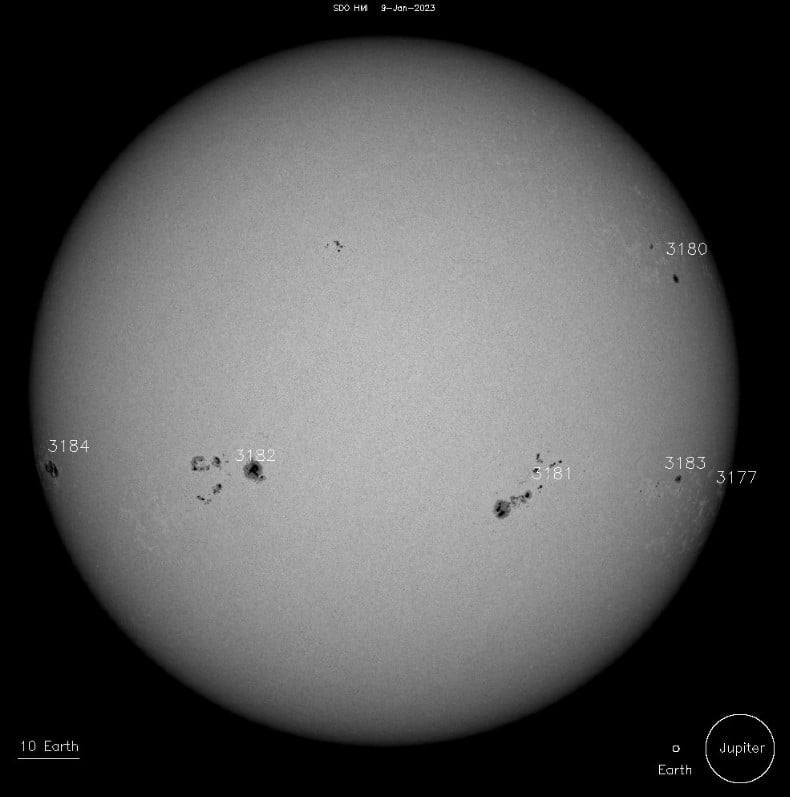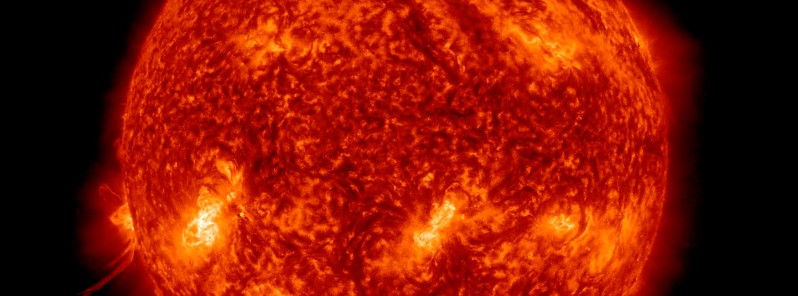Solar activity increased over the past 4 days, with numerous C- and M-class solar flares and one X-class flare. With now geoeffective AR 3182, the source of the X1.2 solar flare on January 6, developing unstable ‘beta-gamma-delta’ magnetic configuration, the chances for more X-class solar flares have increased to 30%.
A total of 7 M-class solar flares erupted on the Sun since X1.2 at 00:57 UTC on January 6, most of them from newly-numbered AR 3184 (beta) that rotated onto the southeast limb on January 8 and produced a total of 4 flares during the day — M1.2, two M1.4, and M1.0, followed by M1.1 on January 9.
Region 3181 (beta-delta), now moving away from the center of the solar disk, produced an M2.1 flare at 09:01 UTC today.
There were no Earth-directed coronal mass ejections (CMEs) over the period, but this might change in the days ahead.


On January 8, Region 3182 developed a beta-gamma-delta magnetic configuration and now poses a threat for strong to extreme (R3 – R5 Radio Blackouts — X-class) solar flares.
The region is currently in a geoeffective position, so any coronal mass ejection (CME) produced by it would most likely be Earth-directed. This threat will last for a couple of days as the region rotates away from the center of the disk.
Additionally, a new Region 3185 (N20E07, Bxo/beta) emerged and was numbered over the past 24 hours.
The greater than 2 MeV electron flux was normal to moderate and the greater than 10 MeV proton flux was at background levels in 24 hours to 12:30 UTC today. There is a slight chance for a greater than 10 MeV proton flux enhancement at minor storm levels through January 11. The greater than 2 MeV electron flux is expected to be normal to moderate over the next 2 days.1
The solar wind environment was nominal over the past 24 hours. Solar wind speeds ranged between 350 – 450 km/s, total field was steady near 5-6 nT, and the Bz component was mostly neutral or northward.
Ambient solar wind conditions are expected to prevail on January 9. A slight enhancement is expected on January 10 and 11 due to the anticipated influences of a negative polarity coronal hole high speed stream (CH HSS).
1 Forecast Discussion – Issued: 2023 Jan 09 0030 UTC – Prepared by the U.S. Dept. of Commerce, NOAA, Space Weather Prediction Center




